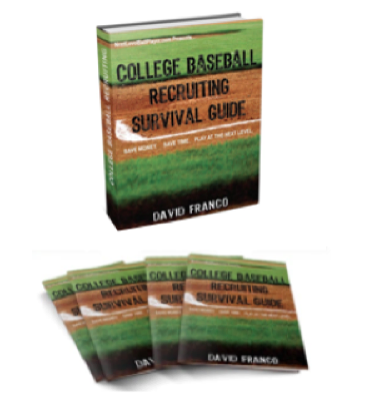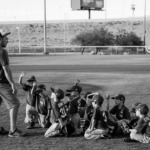Today’s post comes from Jeff Opalewski. Coach Opalewski is in his 3rd year as an Assistant Coach and Recruiting Coordinator at Central Michigan University in Mount Pleasant, MI. He serves as the pitching coach where he has overseen 5 former hurlers move into the professional ranks and 9 times CMU pitchers have been tabbed as ‘MAC West Pitcher of the Week’. As a player, Jeff played collegiate baseball at CMU and was the 28th round pick of the Cleveland Indians in the 2000 draft out of Saginaw Heritage High School. To learn more about Jeff and the CMU Chippewas, visit www.cmuchippewas.com.

The recruiting process. There are very few things involved with college baseball that are less precise. Given the very nature of college baseball and the inherent difficulties of trying to put together the best possible roster of 35 players, keeping in mind that we can only split 11.7 scholarships over 27 players (at a minimum of 25% per player), almost forces that this be a very inexact science. Further complicating things is the uncertainty of a professional draft that does not require players to declare their eligibility in advance.
I feel very fortunate that the staff of FullWindup.com has offered me the opportunity to share some of my experiences and insight as a Division I recruiting coordinator over the next several weeks in a multi-part series about recruiting. Hopefully, I will be able to inspire a greater understanding of the process we as college coaches have to undergo in our never ending quest to put the best possible club on the field on an annual basis. I plan to share some of the evaluation process that we go through to identify potential student athletes and the thought process that occurs as we make decisions about who to make an offer to, how much to offer them, and why. Specific topics that will be addressed include: academics, ability level and projection, make-up, roster management and scholarships, among many other things.
Inevitably, the information that is going to be shared will be slanted towards our experiences here, as that is what I know. It is my personal belief that when it comes to winning games the two most important aspects that a college baseball program needs to do are recruit well and develop players. These two things go hand in hand as we need to consider not only what a player presently can do to help us win, but also what he will be able to do 2, 3, and 4 years from now as they develop in our program. It has been said many times by many great coaches that recruiting is the lifeblood of a program, and over the next several weeks you will have an opportunity to learn what this heartbeat means from our perspective.
——
If you are looking for more information on college baseball recruiting, check out this 42-page guide designed to help players and parents alike as they navigate through the recruiting process and help you take initiative in your own recruiting process. If you are a high school baseball player (or parent) who is not sure how the recruiting process works, then the College Baseball Recruiting Survival Guide is a must have. Click here to learn more.







3 responses to “Recruiting from the College’s Perspective”
[…] This post was mentioned on Twitter by Max Performance. Max Performance said: RT fullwindup: New post from @CMUBaseball – Recruiting from the College's Perspective | The Full Windup | http://wp.me/p17FO8-5z #collegebaseball […]
[…] Part two in a series by Jeff Opalewski about college baseball and the recruiting process. (Read part one here.) […]
[…] Jeff Opalewski. If you missed the first two posts, you can find them by following these links: Part 1, Part […]